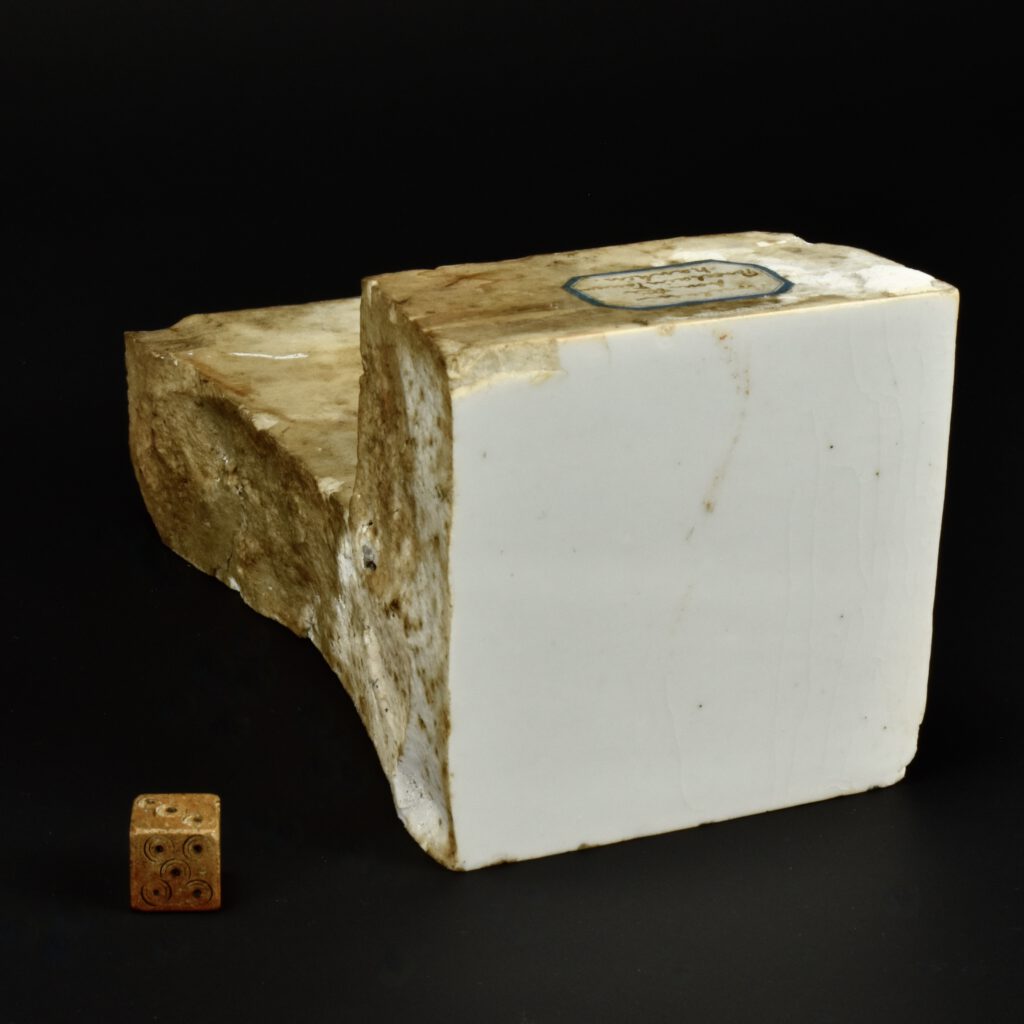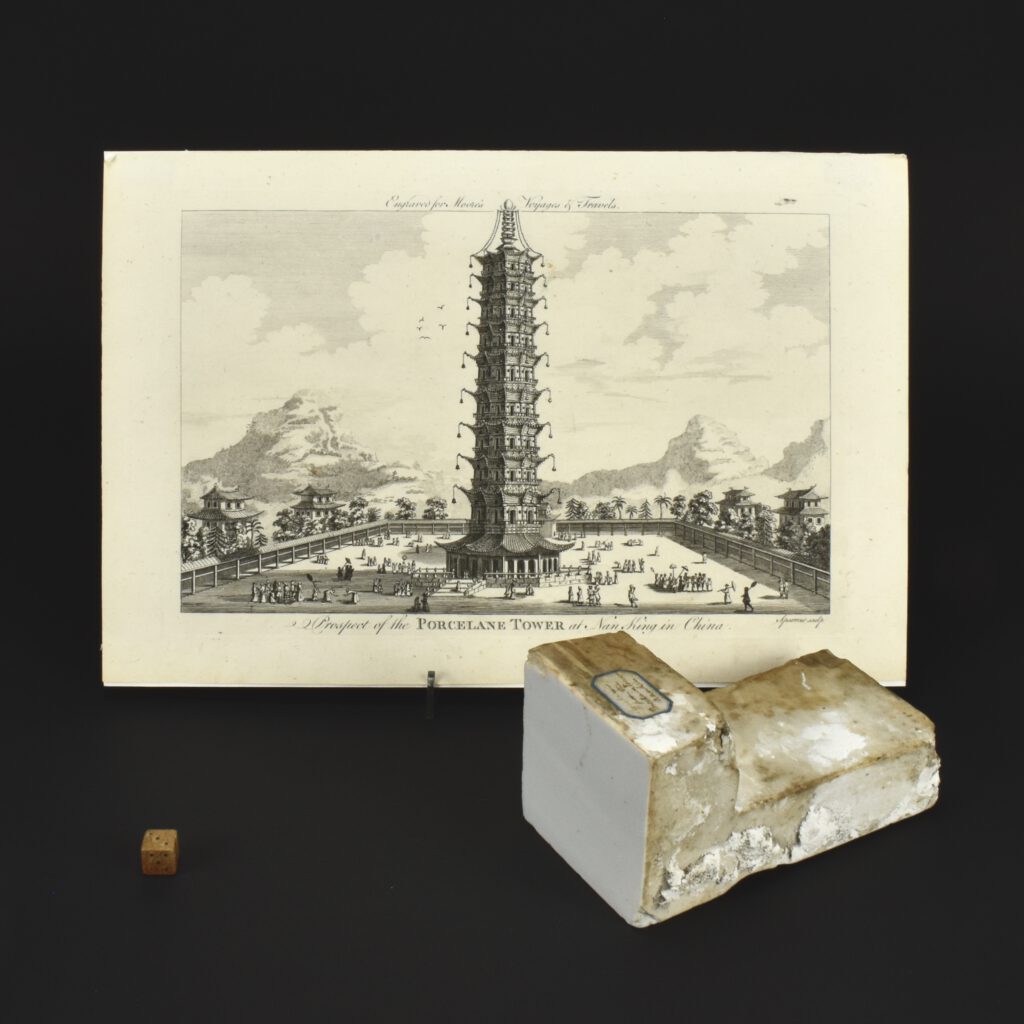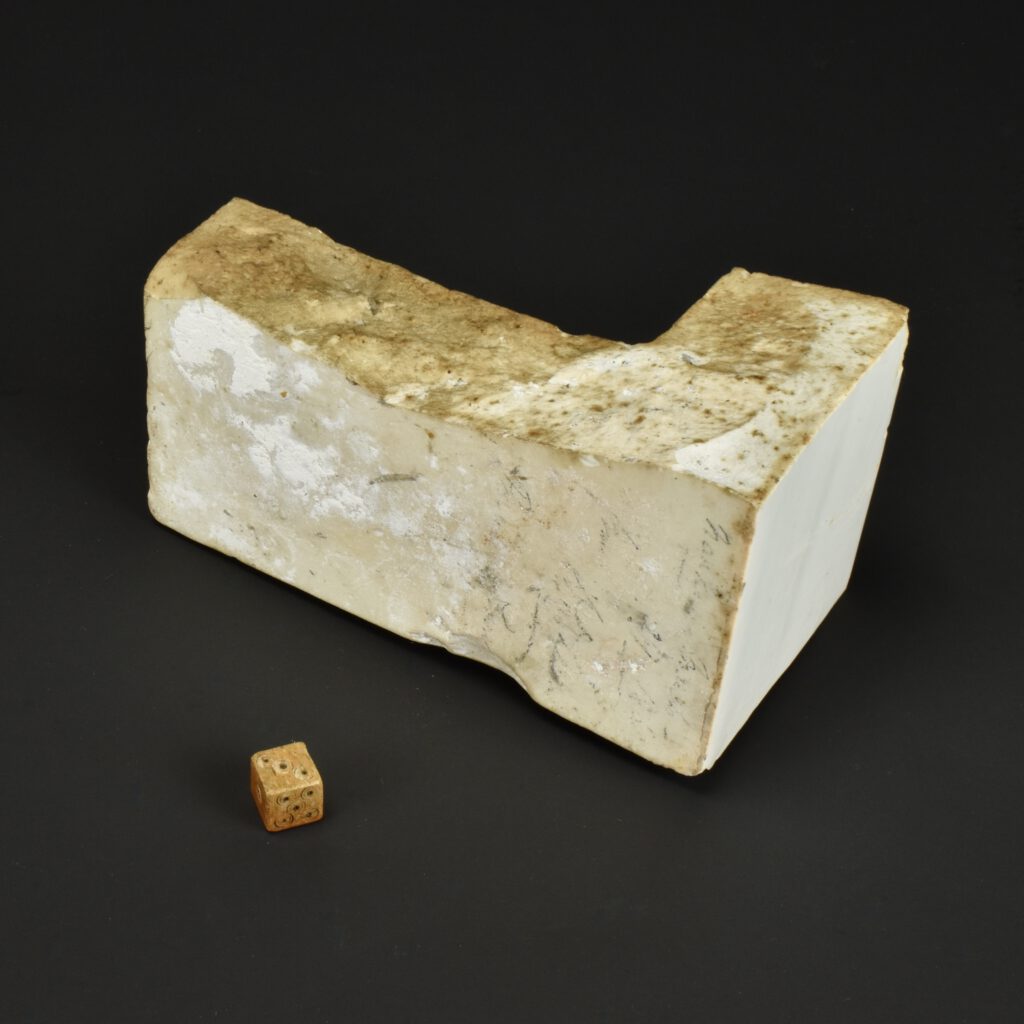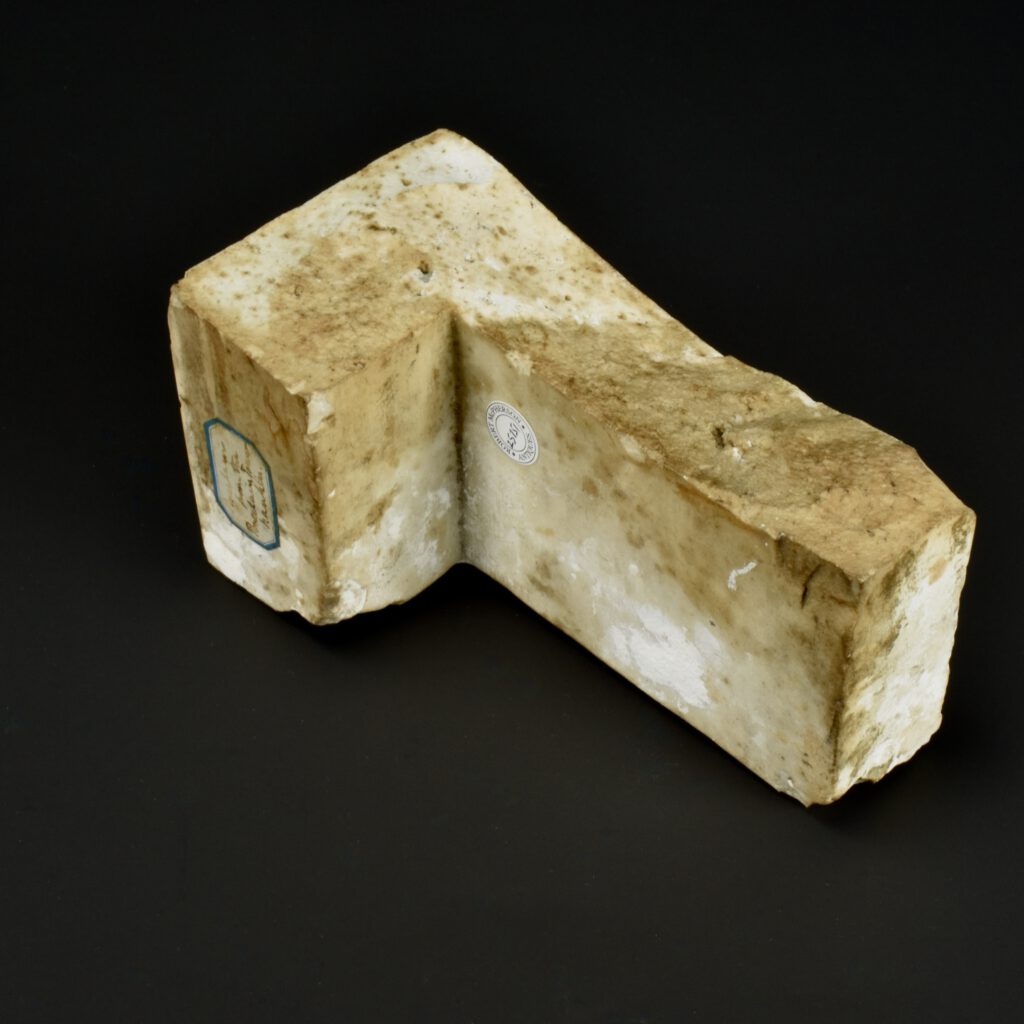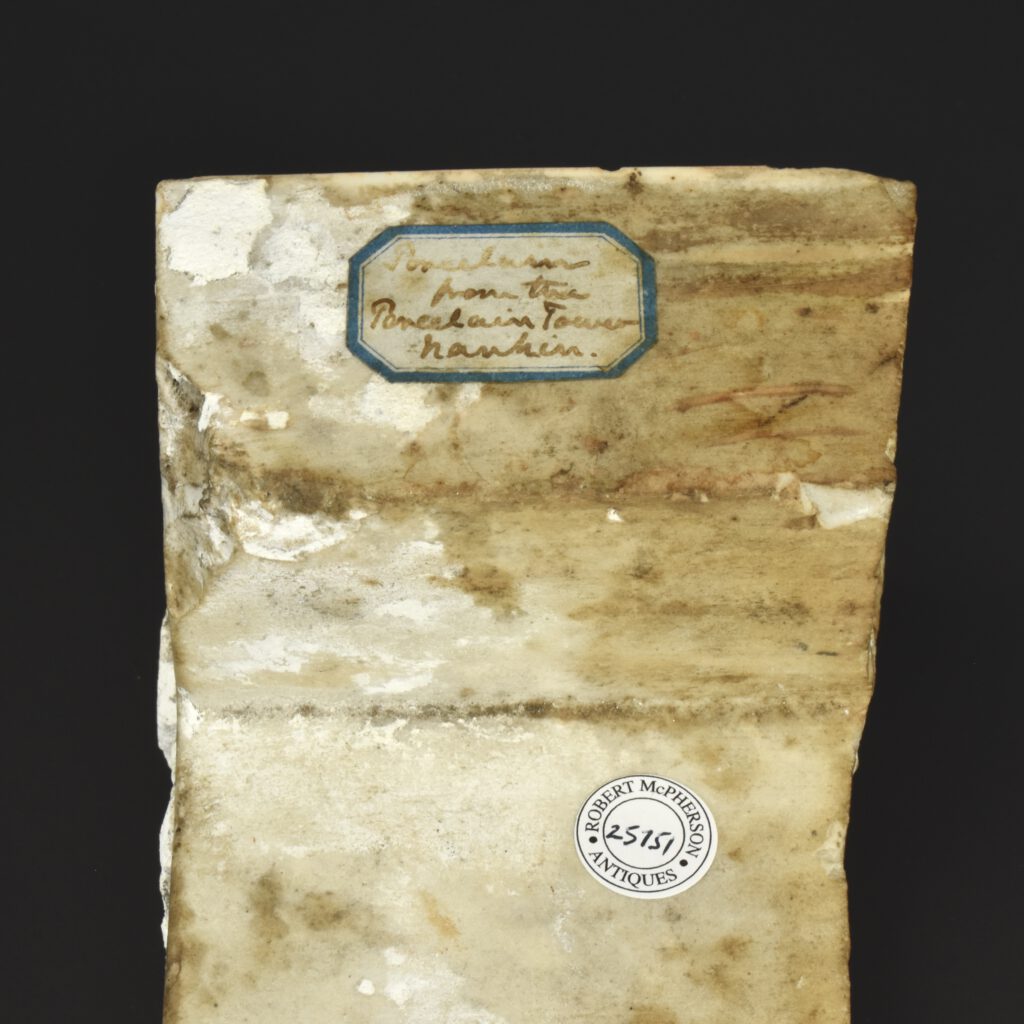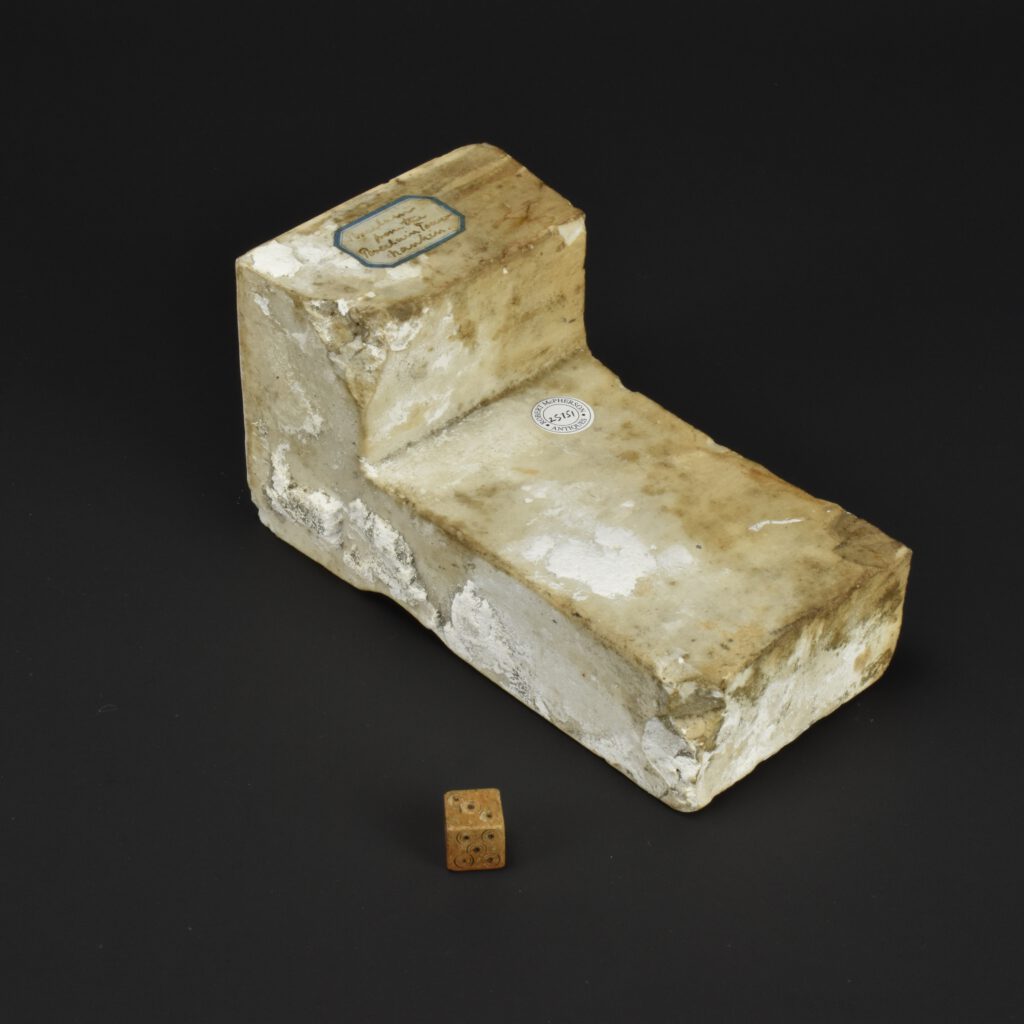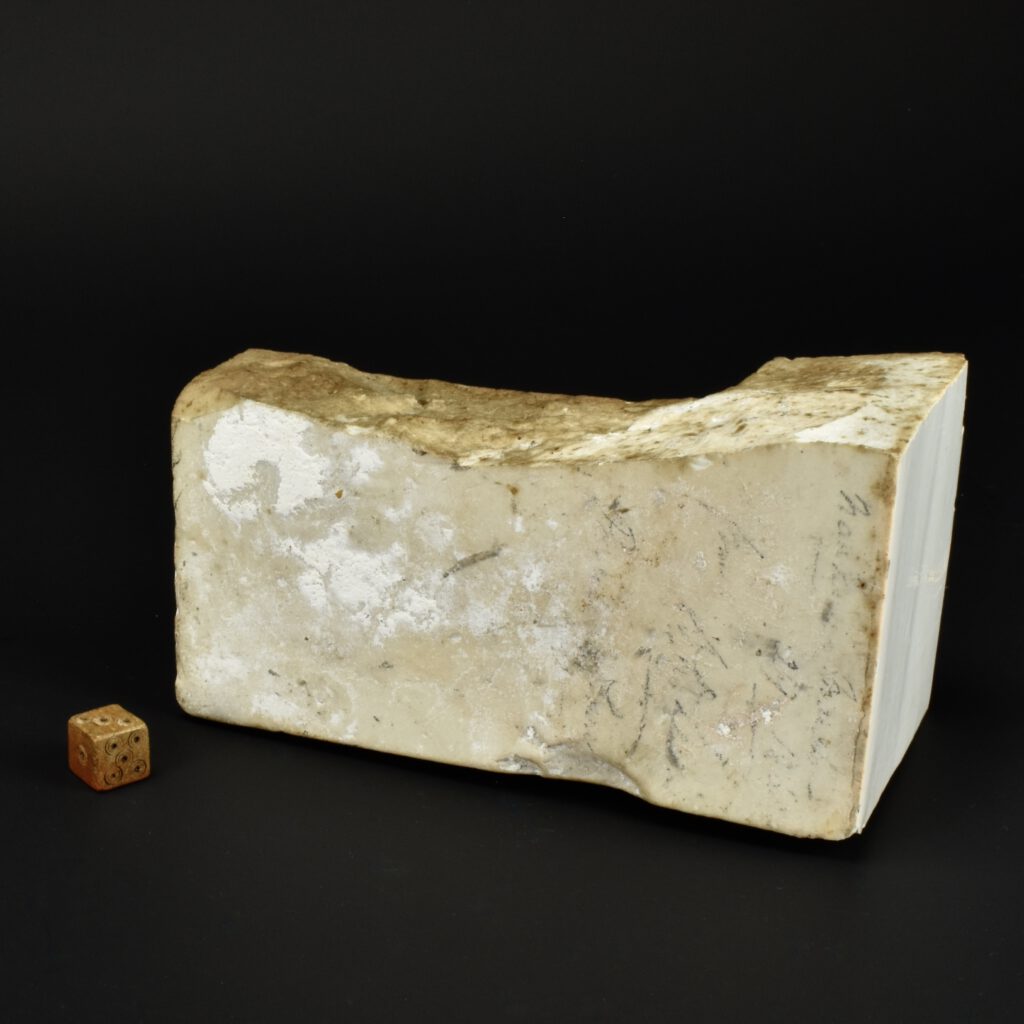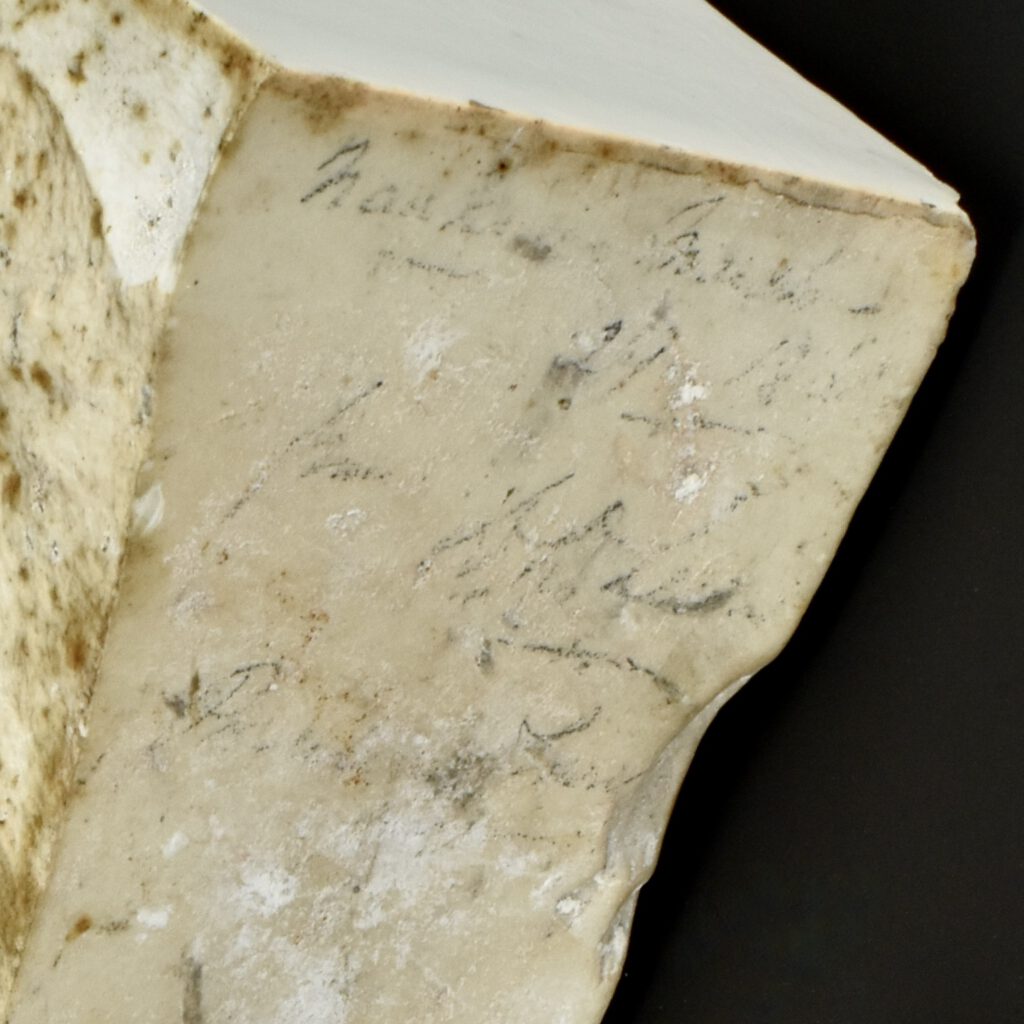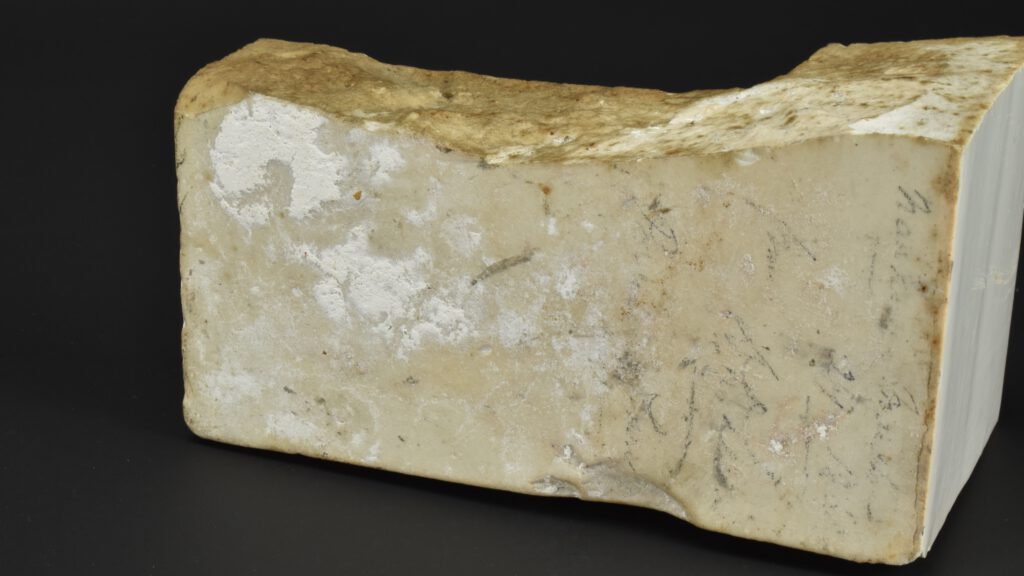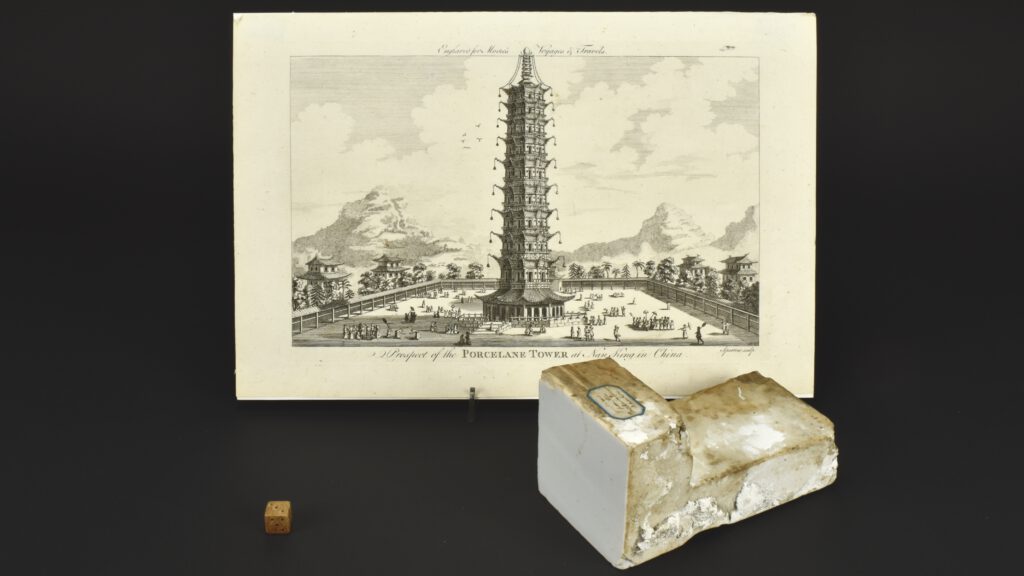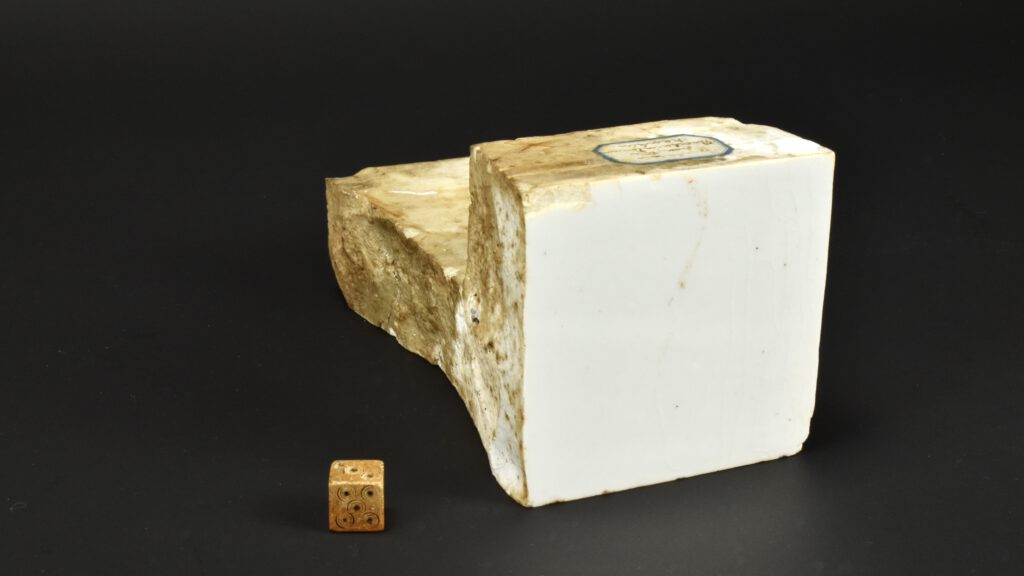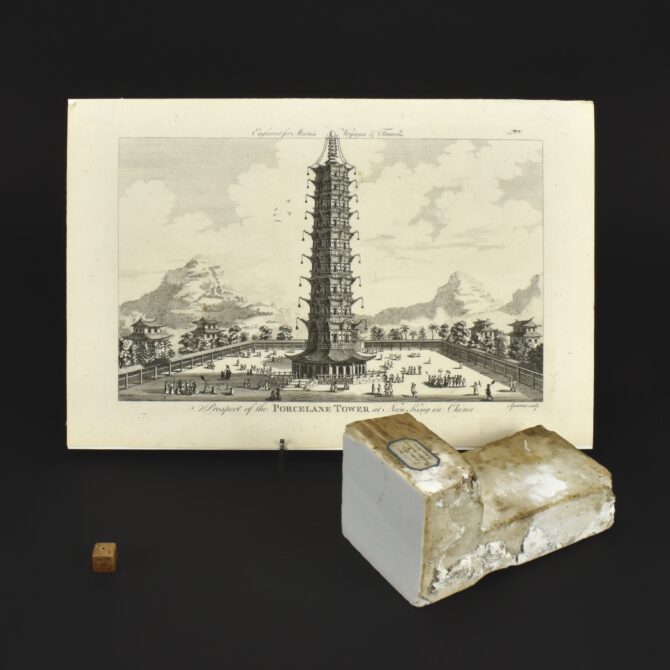
A Very Rare Yongle Imperial Porcelain Brick from the ‘Porcelain Tower of Nanjing’ c.1412 and 1419
A Very Rare Yongle (1403-1424) Imperial Ming Porcelain Brick from Porcelain Tower of Nanjing, made at Jingdezhen, Jiangxi Province. This pure white porcelain brick is L shaped and glazed on one side only, it was made between c.1412 and 1419. Porcelain was rarely used as a building material in China as it was considerably more expensive than the normal lead-glazed earthenware. It was ordered as building material for the Da Bao’en Si in Zhubaoshan, outside Nanjing, and made at the imperial factory at Zhushan. From the excellent Catalogue of Late Yuan and Ming Ceramics in the British Museum (Jessica Harrison-Hall. The British Museum Press, 2001. ISBN 0-7141-1488-X.). “Initially, in 1982, seventeen similar bricks were excavated from the Yongle stratum 3 there, on Zhushan Road. These are misshapen, which to some extent explains why they were discarded. However, in 1994 a further 2,240 Yongle white porcelain bricks were unearthed at Dongmentou, in four different sizes. On a visit to Jingdezhen in 1997 the author saw, piled into a wall at Jingdezhen Ceramic Research Institute, these materials, originally may have been buried as spare building materials”. There is thick white residue, which in places is very thin, this is rice glue. This is a traditional adhesive that was used in Ming architectural fittings, such as this pottery elephant. Rice glue was used as a mortar in the Great Wall of China, to this day there are sections of the Han dynasty wall where the rice is still fulfils its function after 2,000 years. The Yongle emperor ordered this tower and temple to be built as a memorial to his dead parents. Construction began in AD 1412 and the main structure of the tower was completed in AD 1419 and the temple finished in AD 1431. The pagoda was nine stories high and was known in Europe as the Porcelain Pagoda because of these bricks used as a building material. Before it was destroyed in the Taiping Rebellion in AD 1853–54 it was considered one of the Seven Wonders of the World. From a Victorian collection of curios. Inscribed in pencil, now worn, with a date, perhaps 1851 0r 1861. A paper label edged in blue reads “Porcelain from the Porcelain Tower Nankin”.
Accompanying this Yongle porcelain fragment is an 18th century engraving from John Hamilton Moore’s A New and Complete Collection of Voyages and Travels, London c.1778, depicting the Porcelain Tower.
See Below For More Photographs and Information.
SOLD
- Condition
- When looking at the brick from the glazed side, you see the left hand edge is straight, behind the glazed front it is quite uneven. Perhaps it is broken, however there are traces of rice glue. So it might well have been trimmed when being added to the building, especially as the glazed front is a straight line. Some chips and light scratches to the glazed front.
- Size
- Length 14.6 cm (5.7 inches). Width 7.8 cm (3 inches)
- Provenance
- From a Victorian collection of curios. Inscribed in pencil, now worn, with a date, perhaps 1861. A paper label edged in blue reads "Porcelain from the Porcelain Tower Nankin"
- Stock number
- 25751
- References
- A similar white L-shaped Yongle (1403-1424) Imperial porcelain tile from 'Porcelain Tower of Nanjing' in the Percival David Collection (PDF A458) is in the British Museum, London. The BM website says this is not on display but I think it is, high up on a glass shelf in the Percival david Room. Two Yongle white porcelain tiles from the same building are illustrated in Catalogue of Late Yuan and Ming Ceramics in the British Museum (Jessica Harrison-Hall.The British Museum Press, 2001. ISBN 0-7141-1488-X.) page 523-524, 18:9 and 18:10.
Information
An L-shaped Yongle (1403-1424) Imperial White Porcelain Brick c.1412 and 1419.
from 'Porcelain Tower of Nanjing' in the Percival David Collection (PDF A458).
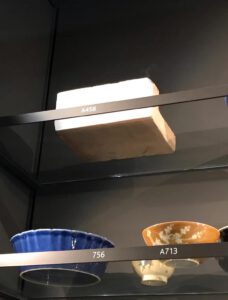
Ming Tiles and Bricks : In my descriptions I have relied heavily on Jessica Harrison-Halls wonderful and indispensable catalogue of late Yuan and Ming ceramics at the BM, see : Catalogue of Late Yuan and Ming Ceramics in the British Museum (Jessica Harrison-Hall.The British Museum Press, 2001. ISBN 0-7141-1488-X.)
